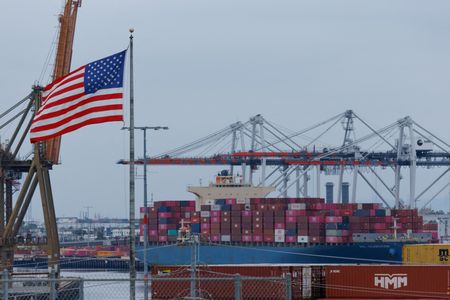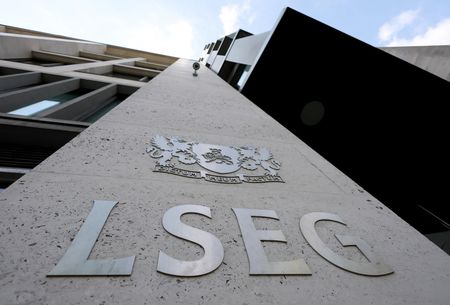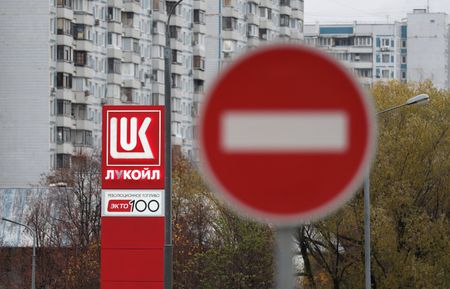By John Revill
ZURICH (Reuters) -The United States will slash its tariffs on goods from Switzerland to 15% from a crippling 39% under a new framework trade agreement that includes a pledge by Swiss companies to invest $200 billion into the U.S. by the end of 2028, the Swiss government said on Friday.
“This agreement puts Switzerland on an equal footing with the European Union and brings the tariff level down from 39% to 15%,” Swiss Economy Minister Guy Parmelin said in announcing the deal, which affects about 40% of Switzerland’s exports.
“Of course, we would prefer (the $200 billion) to be invested in Switzerland,” Parmelin added. “And that’s why the Federal Council in parallel is doing everything to see how we can reduce costs for our businesses.”
U.S. Trade Representative Jamieson Greer said earlier that the White House would announce details later on Friday.
The lower tariff rate is likely to be activated within “days, weeks,” as soon as the U.S. customs processing systems can be adjusted, said Helene Budliger Artieda, director of Switzerland’s State Secretariat for Economic Affairs.
She added that a large portion of Swiss investments in U.S. production would come from the pharmaceuticals and life sciences sectors, but declined to provide specifics. Pharmaceuticals is by far the largest export sector from Switzerland to the U.S.
Greer told CNBC the deal would involve Switzerland shifting “a lot of manufacturing here to the United States – pharmaceuticals, gold smelting, railway equipment. So we’re really excited about that deal and what that means for American manufacturing.”
PHARMA TARIFFS CAPPED AT 15%
The deal guarantees a 15% tariff ceiling for Swiss drugmakers, including Roche and Novartis from U.S. President Donald Trump’s forthcoming Section 232 national security duties for the sector, which could reach 100% for certain patented drugs.
Parmelin said the 15% cap would also apply to other future Section 232 duties, including semiconductors, putting it on the same footing as the EU.
“The risk of much higher sector-specific tariffs is therefore ruled out,” Parmelin added.
A Swiss government statement said the tariff agreement, which includes neighboring Liechtenstein, will reduce Swiss import duties on U.S. industrial products, fish and seafood and agricultural products “that Switzerland considers non-sensitive.”
Switzerland will grant the U.S. duty-free bilateral tariff quotas on 500 tons of beef, 1,000 tons of bison meat and 1,500 tons of poultry meat, the government said.
LEVEL PLAYING FIELD WITH EU
Swiss industrial groups welcomed the deal, saying it would put them on a level playing field with competitors from the European Union, which agreed to a 15% tariff on EU exports to the U.S.
“For the industrial sector, which was subject to a 39% tariff since August 1, this is good news. For the first time, we have the same conditions in the U.S. market as our European competitors,” said Nicola Tettamanti, president of Swissmechanic, which represents small and medium-sized manufacturers.
“It’s a great relief on tariffs, but additional economic burdens and risks for Switzerland remain,” said Hans Gersbach, a director of the KOF Swiss Economic Institute at ETH Zurich.
Switzerland’s machinery, precision instruments, watchmaking, and food sectors, which export to the U.S., would see the most relief, Gersbach said.
KOF forecasts Swiss economic growth of 0.9% in 2026, but this would exceed 1% with the lower tariff rate, he added.
Switzerland had a $38.3 billion goods trade surplus with the U.S. in 2024, according to U.S. Census Bureau data. This rose to $55.7 billion in 2025 through July, reflecting primarily the front-loading of U.S. imports from Switzerland during the first quarter, before Trump imposed his “reciprocal” tariffs in early April.
Nadia Gharbi, an economist at Swiss bank Pictet, said the tariff reduction removed the main downside risks for the country’s economy and represents a clearly positive development for Swiss industries and for the overall growth outlook.
“Under the previous tariff regime, Switzerland suffered a significant loss of competitiveness — not only because of the strength of the Swiss franc, but also because neighboring European economies were subject to tariffs of only around 15%,” she said.
Swiss industry on Friday reported a 14% fall in exports to the U.S. during the three months through September, technology industry association Swissmem said, while machine tool makers saw shipments slump 43%.
(Reporting by John Revill; Additional reporting by Dave Graham and Emma Farge, Miranda Murray and Olivia Le Poidevin; Writing by David Lawder and John Revill, Editing by Rod Nickel and Matthew Lewis)












